The Man Who Photographs Rocket Launches for a Living
Bill Ingalls documents the U.S. space program, with an eye for emotion.
:focal(598x467:599x468)/https://tf-cmsv2-smithsonianmag-media.s3.amazonaws.com/filer/91/38/91384d2e-f5d6-4889-b966-f87857a7d999/ingalls_opener.jpg)
Bill Ingalls has never been in space, but in more than 30 years as a contract photographer for NASA, he has traveled nearly everywhere else. He was dropped into an active Alaska volcano to snap a shot of NASA’s Dante II robot. He flew through a hurricane aboard a DC-8 and, when space dwellers have returned to Earth in Soyuz spacecraft, he’s endured the subzero temperatures in Kazakhstan.
How Ingalls has approached the task of documenting the U.S. space program is reflected in a comment about the end of the space shuttle era, when the shuttles were being flown to their “retirement homes.” After taking one photo after another of the spacecraft, he realized the real story was the “people on the ground pointing and looking up with their jaws dropped. I was like, ‘There’s the emotion, there’s the tie-in.’ ” Portraying the emotions of the space program, in circumstances both grand and intimate, has made Ingalls only the second photographer ever to receive the prestigious National Space Club Press Award.
Chilly Reception
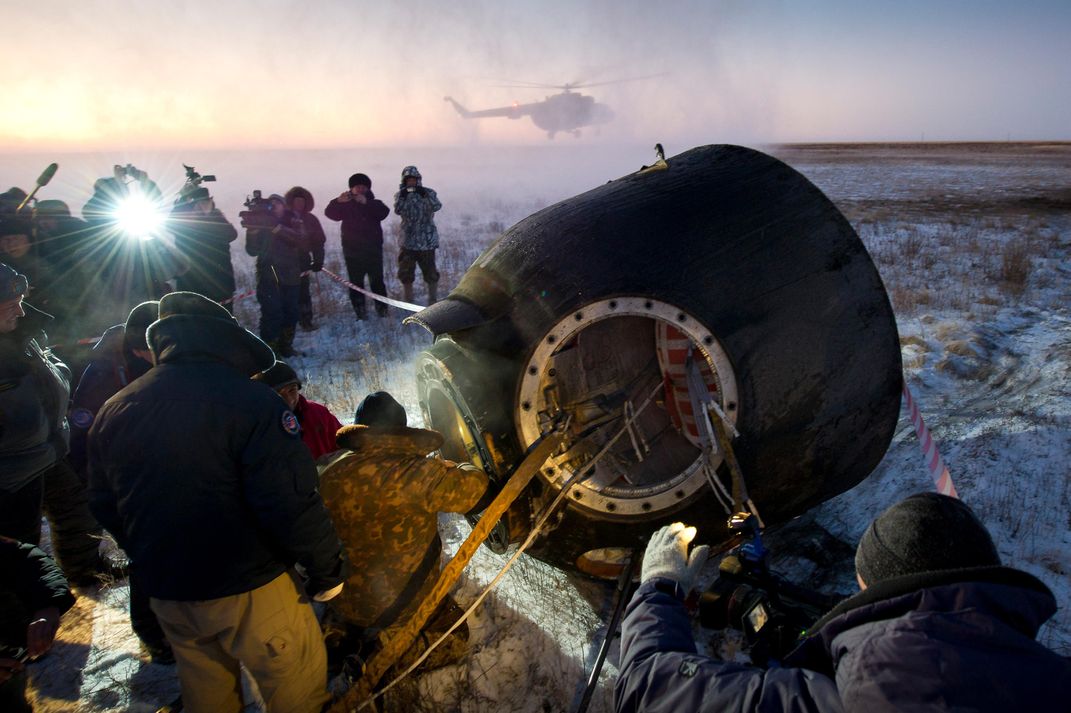
A bright flash freezes a moment in time shortly after the landing of the Soyuz TMA-02M spacecraft. “Getting someone else’s flash to go off at the right time when you’re taking a picture is kind of a luck of the lottery,” says Ingalls. “And in this case, it actually helped backfill the image.”
Even on the ground, space exploration poses hazards. “You’ll notice that no one is to the right side of the capsule,” says Ingalls. “There’s a small amount of radiation that’s coming off the backside, so you don’t want to be over there.”
A Matter of Perspective
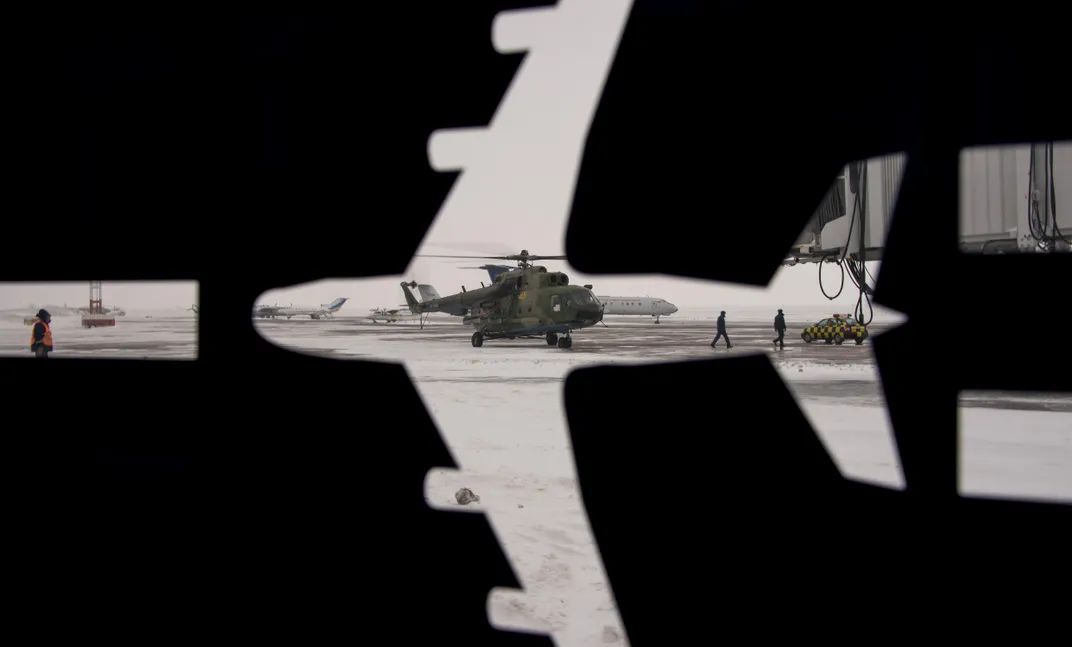
“What can I do different?” is a question that Ingalls asks himself when he’s on an assignment. “As a professional photographer who covers some of this often and repetitively, you get bored,” he says.
If there’s one thing that Ingalls has seen over and over again at Soyuz recovery missions, it’s the Russian Mil Mi-8 search-and-rescue helicopters, which act as remote command centers while also ferrying personnel and journalists to the landing sites. One day Ingalls looked at a die-cut decal on the window of an airport bus that he had seen several times before and was inspired to “put two and two together” and snap the shot through the decal’s outline of the aircraft.
“You need to dig a little deeper and search a little harder to try to find something unique,” says Ingalls.
Safe at Home
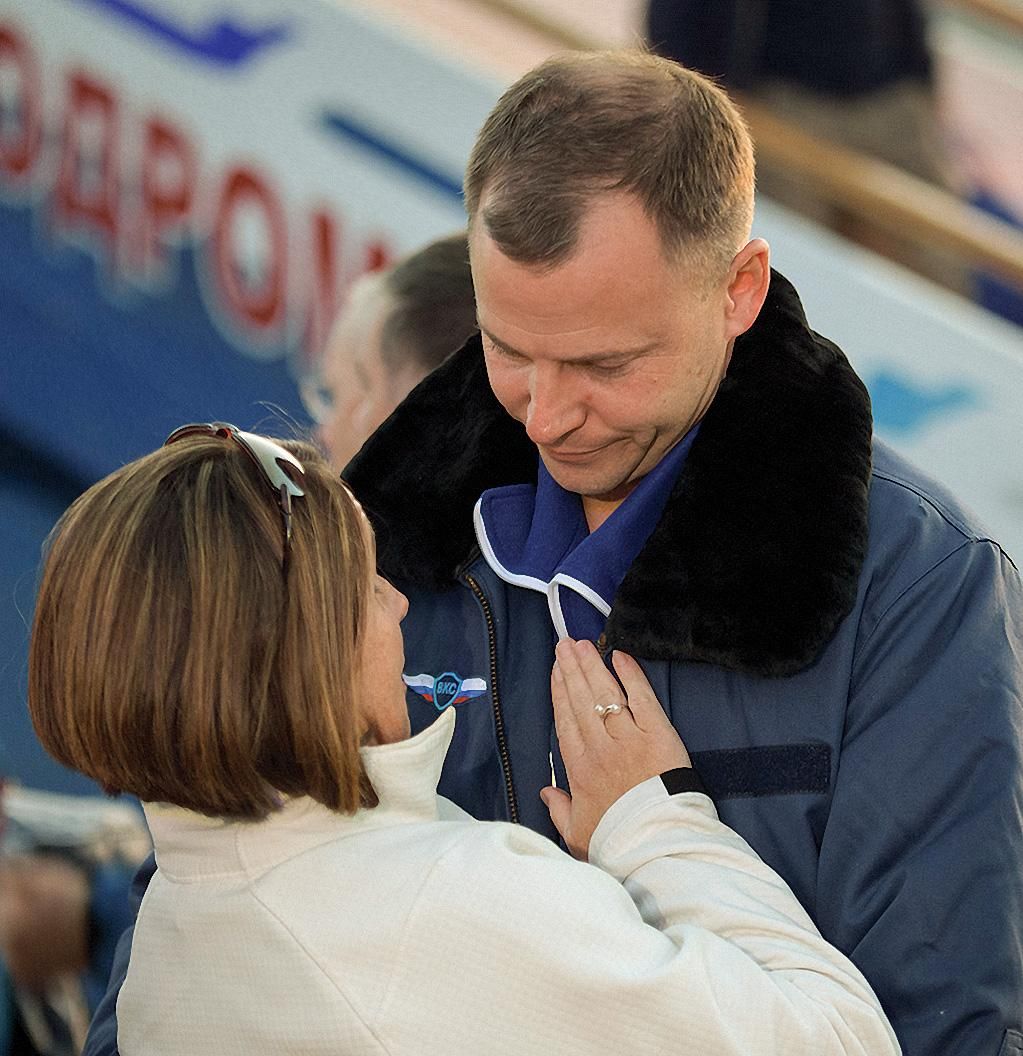
On October 11, 2018, shortly after the launch of the Soyuz MS-10 spacecraft from the Baikonur Cosmodrome, a booster failed to jettison cleanly and the launch was aborted during ascent.The escape system worked, and the capsule landed south of the city of Zhezkazgan, Kazakhstan. U.S. astronaut Nick Hague and Russian cosmonaut Alexey Ovchinin were safely recovered and flown back to Baikonur, where Hague embraced his wife Catie on the tarmac.
“It was not until this moment when you could see it between Nick and his wife, that you feel this could have been a really bad day,” recalls Ingalls.
Serendipity
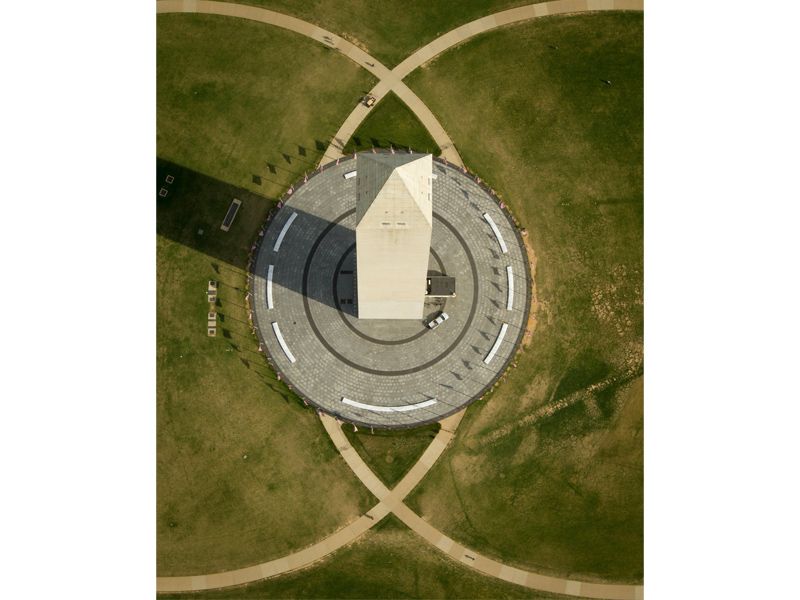
Ingalls was in a helicopter, preparing to take air-to-air shots of the space shuttle Discovery flying piggyback on a 747, when his pilot said, “How about I do a flyby at the Washington Monument and I tilt the helicopter and we try to get this shot?”
Ingalls did indeed get the shot—by leaning out of the helicopter (strapped in, of course). Despite his fear of heights, “I really enjoyed it,” he says.
“I’ve had a few of those moments in my career where I ended up with a photo that wasn’t necessarily what I was there for.”
Birds of a Feather
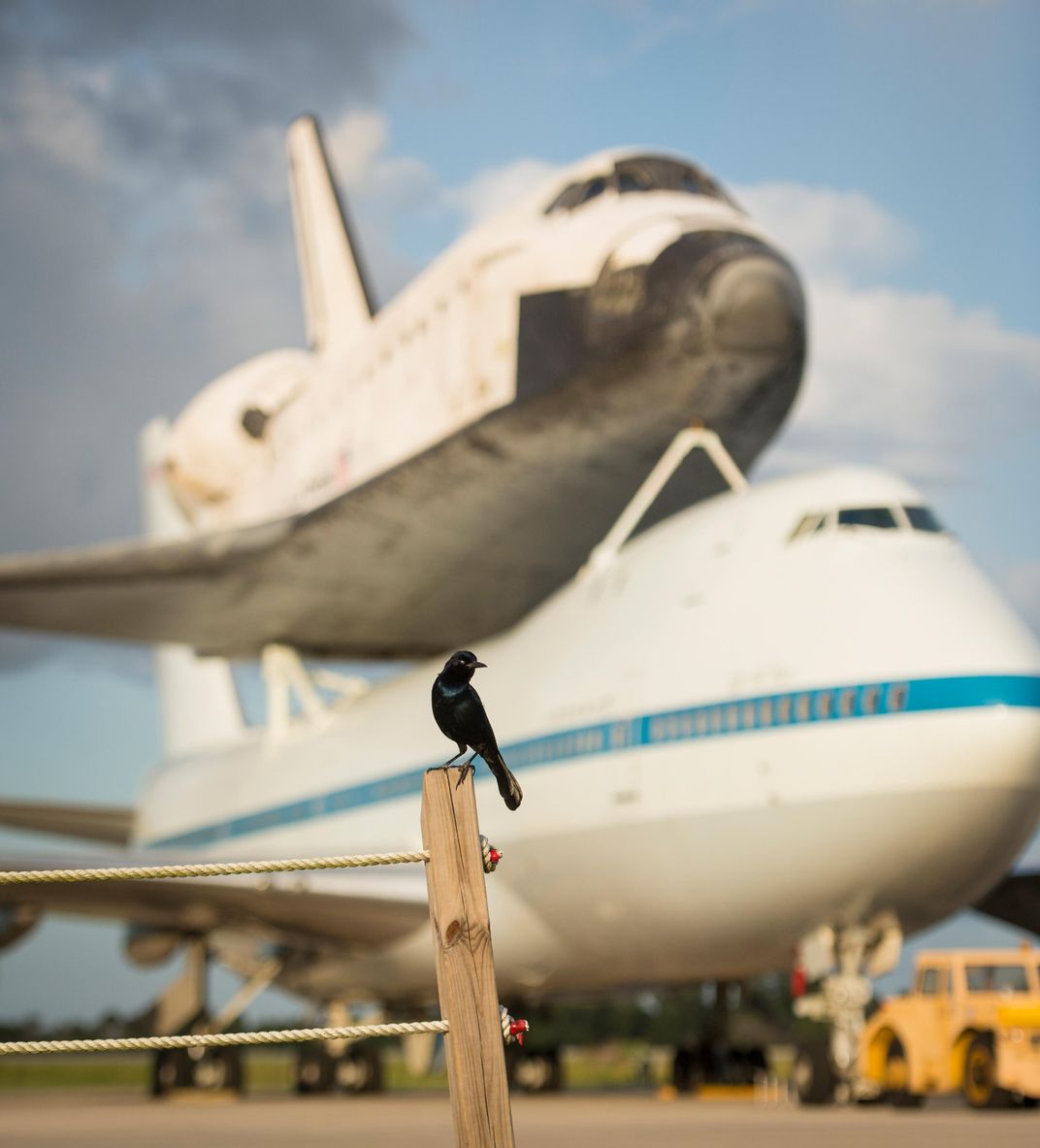
A bird perches on top of a fence post while the space shuttle Endeavour perches on the back of a 747 at the Shuttle Landing Facility at NASA’s Kennedy Space Center on September 17, 2012.
An essential part of being a photographer is being able to respond quickly to unexpected opportunities like this one, says Ingalls. “The name of the game is to learn your gear, what it can do, and how to make it do what you want it to do to a point where you don’t necessarily have to think about it too much. That way you can be quick.”
Almost There
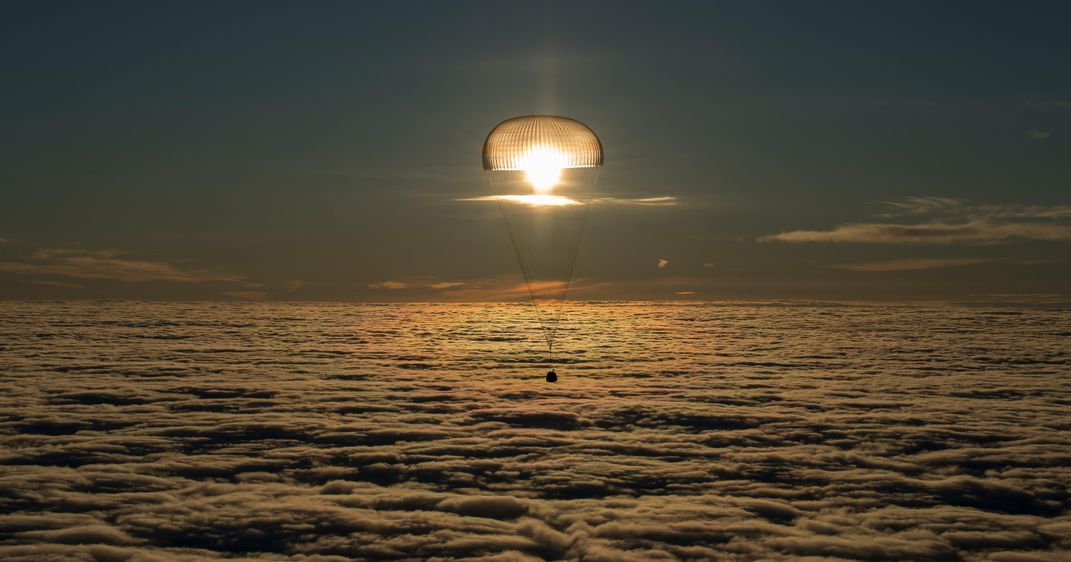
A parachute carrying the Soyuz MS-06 spacecraft is illuminated by the sun moments before it drops through a cloud bank, some 10,000 feet above Kazakhstan.
The photo was taken from the open door of a helicopter, where, prior to take off, Ingalls and Russian photographers undertook a dress rehearsal to work out their positioning relative to one another.
“At that altitude with the wind blowing, it’s kind of hard to hear each other,” he says. “It’s very loud and noisy in there. So, it’s just good to see where we’re going to work and how it’s going to fit.”
Moonlight Serenade
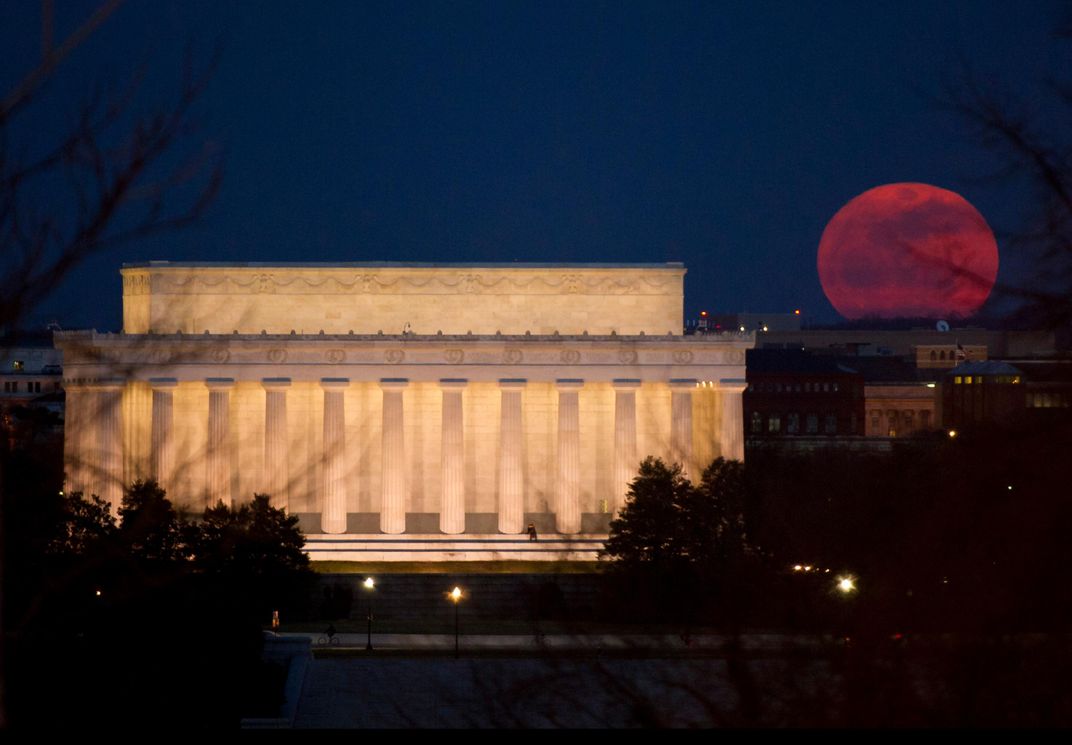
“One of the things I’m often asked is, ‘How do you make a good moonrise, moonset, sunrise, or sunset photo?,’ ” says Ingalls. “The real key in trying to make something interesting is tying it into your place and where you are and what’s going on.” That was especially true on March 19, 2011, when photographers were out en masse to capture a photo of the “Super Perigee Moon,” which looked 14 percent larger than usual because it was making its closest orbital approach to Earth since 1993, at a distance of 221,565 miles.
Befitting the occasion, Ingalls chose the grandeur of the Lincoln Memorial as the setting for his portrait of the moon.
Early Morning Rollout
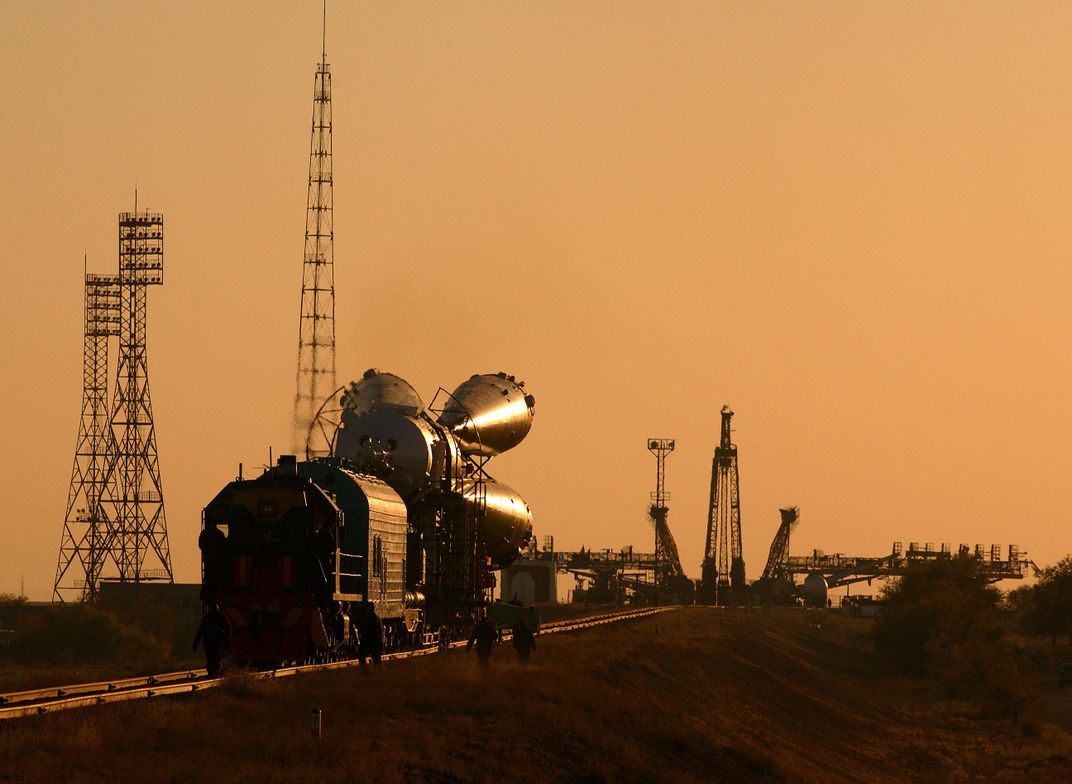
The Soyuz rocket—164 feet long—is transported by train to the launch pad at the Baikonur Cosmodrome in Kazakhstan on November 5, 2013. Ingalls took this photo at 9 a.m., two hours after it rolled out.
“In the last year, they actually changed the time zone for Baikonur, so these moments of nice light early in the morning are harder to come by now. I’m grateful to have had many years of wonderful morning light for the rollout.”
The historic launch pad known as “Gagarin’s Start” can be seen in the background. Initially, it bore the simple moniker “Site No. 1.”
Mission Accomplished
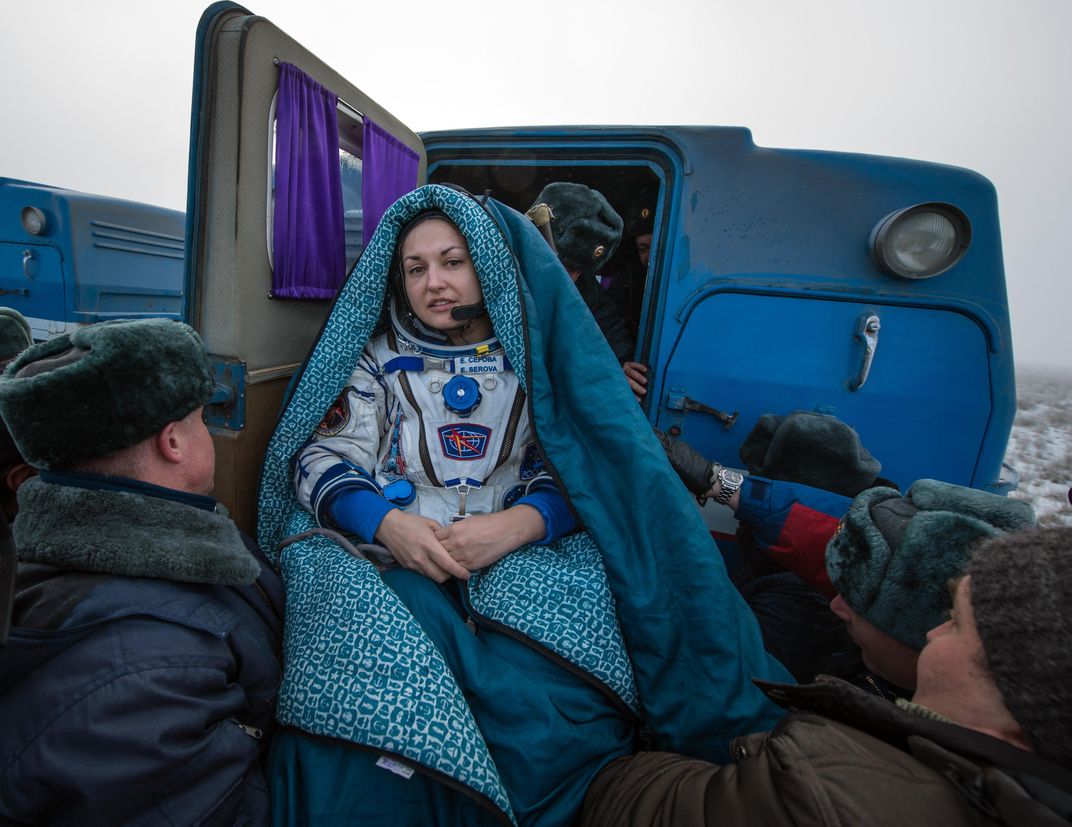
Expedition 42 cosmonaut Elena Serova is carried by Russian personnel into an all-terrain vehicle shortly after landing in the Soyuz TMA-14M spacecraft in Kazakhstan on March 12, 2015.
“Often when the crew is down you’ll get the jovial hands up and cheering and pointing and the high fives, which is all great,” says Ingalls. “But it’s nice to see these contemplative moments as well. And she seems to me contemplative and comfortable with being home and letting everyone support her. She’s accomplished something.”
Ingalls reckons that he’s been to Kazakhstan at least 75 times. But would he follow Serova’s example and risk going to space if NASA offered?
“Yes, please!” he responds.
/https://tf-cmsv2-smithsonianmag-media.s3.amazonaws.com/accounts/headshot/mark-strauss-240.jpg)
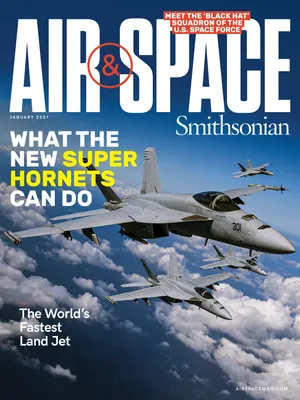
/https://tf-cmsv2-smithsonianmag-media.s3.amazonaws.com/accounts/headshot/mark-strauss-240.jpg)